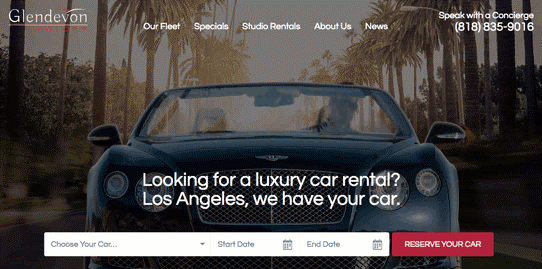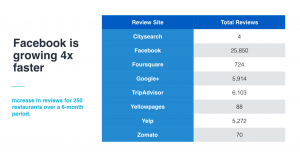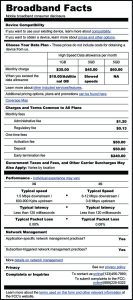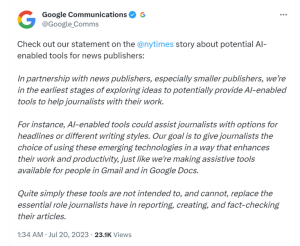Digital should dazzle! There’s no excuse for tired old campaigns when technology makes it so easy and affordable to create attention-commanding images that will help your clients achieve their marketing goals.
And if you haven’t added cinemagraphs to your digital toolbox, you’re missing an opportunity. These little gems pairing a static image with a bit of motion came on the scene in 2011. Flixel and others made production easy, and dozens of big brands have used these “living photographs” to great effect ever since.
Check out five ways you can use cinemagraphs in your marketing campaigns and put some dazzle back in your digital:
1. Email Campaigns
Cinemagraphs are among the latest tools talented designers are using to get people to notice and respond to email messaging. The images are produced as GIFs and work well in emails, as did the animated GIF files of an earlier era. But unlike the dancing leprechauns or revolving globes of the 1970s, cinemagraphs are subtle and seductive.
That may be why they worked so well for Netflix when it used a cinemagraph email campaign to promote its hot original series, “House of Cards.”
Case Study: House of Cards Email Campaign

Netflix and Flixel teamed up to produce cinemagraphs for an email campaign to promote House of Cards. You might think this image is a video of Frank and Claire Underwood riding in a limo through the streets of Washington, D.C. If you’re a fan of the show, you’ll key in on the tension between the two and be dying to binge-watch the new episodes when they’re released.
On closer inspection, you realize that Claire and Frank aren’t moving. You’re looking at a still image and the motion in the background is just a short, endless loop.
That’s the power of a cinemagraph in email: You get the look and feel of video without the file size. The GIF loads quickly, catching the viewer’s attention and making a statement, but using relatively little bandwidth. Yes, it’s practically magic!
2. Your Website
There are many reasons cinemagraphs can be a powerful element on a web page. The stunning images evoke an emotional response. Subtle movements can be incorporated into the design to draw attention to your call to action. And holding your web visitor’s attention is the first step toward conversion.
In fact, one test found that cinemagraphs had click-through rates 5.6 times those of static images. That’s huge!
Case Study: Glendevon Motors

Glendevon Motors’ website make the most of a series of stunning cinemagraphs showcasing each of its luxury rental vehicles.
The word “mesmerizing” is frequently used to describe cinemagraphs and certainly applies to the images employed by Glendevon Motors. More importantly, the short messages delivered with the photos lead the viewer into engagement.
These cinemagraphs are more than pretty pictures — they’re dynamic tools that move the web visitor along the path to conversion by striking the right mood. That mood draws otherwise casual site visitors in, and shows them the “premium” factor that most of their competitors lack.
3. Social Media
Connecting with people through social media sites is one of the most powerful ways to use digital marketing. If you’re successful in getting people to share the buzz about your product or services with their friends, your brand gets an exponential boost.
Cinemagraphs may fill the bill, as they did for A&E’s creepy Bates Motel series. Thousands of fans have shared the haunting images of Freddie Highmore as Norman.
Case Study: A&E’s Bates Motel

Season five of A&E’s popular Bates Motel series will broadcast in 2017, and millions of fans are still watching earlier episodes and engaged with the network through its many social channels.
Early in 2015, Flixel teamed up with A&E to produce a collection of cinemagraphs inspired by the 1969 Alfred Hitchcock film, Psycho, to promote the series. The eerie black and white images with subtle movement garnered thousands of shares by Bates Motel fans on Facebook, Twitter, Tumblr, and Instagram.
Professional photographer Dylan Coulter worked with Flixel CCO Mark Homza and the folks from A&E to produce the images. Response from fans continues to enthusiastic as the timeless images are still in use. And the campaign was a finalist in the 2016 AME awards.
4. Digital Ads
Once you have created cinemagraphs for use in social media, email, and websites, you’ll be able to use them in digital ads, too.
You may not have been that excited about banner ads, but the mesmerizing images can significantly increase CTR. And, as Mercedes-Benz discovered, they improve ad recall.
Case Study: Mercedes-Benz

In Instagram advertising for Mercedes-Benz in Canada, Flixel discovered that the luxury car maker experienced a 34 percent bump in ad recall across three campaigns using cinemagraphs compared to static photos.
The ads included a focus on traction, control, and driving in icy conditions, important considerations for the Canadian audience. The key demographic of 25-34 year-olds had the highest percentage of ad recall. And the campaign achieved a six-point lift in brand favorability among males.
5. Digital Displays/Projections
In the major cities and increasingly in smaller markets, digital displays and projections are reaching thousands of people. As in other applications, cinemagraphs are finding a niche. In the hustle-bustle of city life, they have a calming influence.
Siemens, the electronics company, took advantage of this in a campaign in May 2016.
Case Study: Siemens, Austria
Video shot in Vienna’s underground train stations was used to produce a series of cinemagraphs for Siemens. As the images moved quickly in the background, a smiling, friendly, static image was displayed in the foreground of digital billboards with just a touch of animation — a wisp of hair falling or eyes blinking. Accompanying messages focused on the company’s claim that Austria was being moved forward by the firm’s products and services.
The entrancing images attracted attention as they promoted branding. The subtle movement on the digital billboards contrasted with busy train station activity to attract attention and drive home the brand’s message.
Wrapping Up
Cinemagraphs certainly deserve a place in every designer’s toolbox. From email to outdoor advertising, the show-stopping “magic” pictures have the power to help deliver your client’s message. Give ‘em a try!
Save
Save
Digital & Social Articles on Business 2 Community(82)








